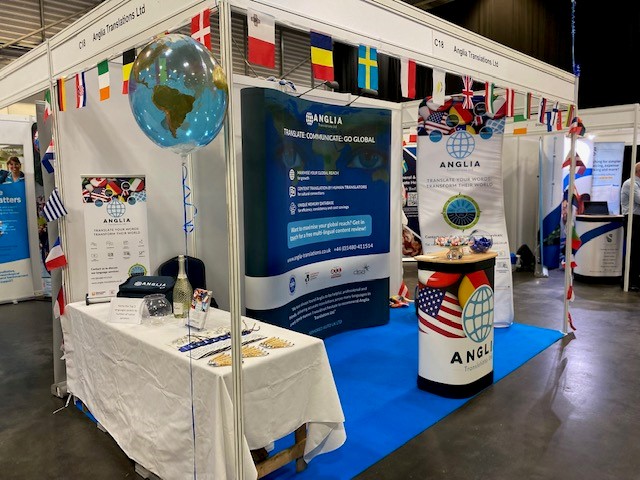How to Build a Global Online Brand
The internet is, unquestionably, the most important invention in our lifetime. It offers incredible potential for us to reach out to communities that would’ve been completely closed off to us beforehand, and exponential opportunities for businesses to grow their brand overseas.
Due to the global nature of the world wide web, exporters, and online businesses have a huge opportunity to expand their audience to take their products to overseas markets.
At Anglia Translations Ltd, we are specialists in transcreation for businesses that are looking to expand their operations overseas.
In this piece, we’ll explore what you need to consider from a marketing, legislation and messaging point of view to become a truly global brand online.
#1: Localised Website Domains
Tapping into foreign markets, means that you need to build a trust element with your target audiences, this is especially the case online.
Obtaining a localised-domain for your chosen regions is an important step towards creating a brand that your audience can recognise and instantly trust.
Of course, the top-level country code for websites in the UK is “.uk”, but below are some common domains to look out for and their representative countries, although a more comprehensive list can be found here:
- France – .fr
- Germany – .de
- United States – .us
- China – .cn
- Spain – .es
- Ireland – .ie
- Italy – .it
- Portugal – .pt
- Saudi Arabia – .sa
- United Arab Emirates – .ae
#2: Culture-Based Design

It’s important to ensure that your online presence and designs are adapting to various colour-schemes, imagery and design features that help to engage a foreign audience.
A good example of this is colour schemes. Colours can signify different things in different countries, for example, in China the colour red symbolises luck and happiness. Whereas in Western Countries this can often be associated with danger.
Product imagery is also very important here too. A good example of this was when Pampers tried to break into the Japanese market, where their branding featured stork motifs. In western countries, we’re very well aware of the stork and baby connection, however, in Japanese culture it is giant floating peaches that bring babies to expectant parents.
#3: Culture-Based Content
Simply translating your website and marketing materials word-for-word; beat-for-beat is just not an option for the modern marketplace – particularly so when looking to take your brand abroad, where cultural differences may dictate the size and shape of market trends.
At Anglia Translations Ltd, we’re experts in the technique known as transcreation, or creative translation, which means that we understand how cultural differences, such as colloquiums, slang and imagery differs from country-to-country.
Our translations reflect not just the contents within the original message, but also the originality, feeling and cultural appeal.
This approach, rather than the likes of Google Translate or AI, is the only way to truly reach the hearts and minds of your target audience.
#4: Multilingual User Experience
By ensuring that your website is utilising a functional Geo-Location plugin, you can ensure that no matter what country the website is accessed from, it can automatically trace the IP address and show the correct language to the user.
To ensure that a user can also toggle this manually, it’s important that they are able to clearly see a means to change the language of the page as well. Flag icons in the header of the website are typically the way to do this.
Whatever means you choose to do this, it’s crucial that multiple languages aren’t visible on a single page, and all the correct information is available to the user when they need it in their native language.
#5: Search Engine Guidelines

Search engines throughout the world will generally follow the same guidance as your current website, but it’s certainly worth taking a look into these to ensure that you’re optimising the site for best practice abroad.
Of course, depending on the type of sector you operate in, it may be the case that you don’t rely too heavily on your website to specifically make sales, so rankings may not be at the top of your priority list.
However, it’s still incredibly important to utilise your website as a trust metric for your customers, so you can build up brand credibility and begin to act as an authority in your space.
#6: Overseas Presence
No matter whether you’re investing in overseas premises, or exporting your way to success, it’s important to consider how you’ll place yourself within your overseas communities.
This might be as a physical premises, such as a delivery hub, or warehouse, or could be something as simple as a virtual office.
Either way, the important thing here is to ensure that your potential customers can see and trust the fact that you have a localised presence.
#7: Social Media

It’s very important to set up and develop a social media strategy for your overseas locations to share content, generate traffic and interact with your audience.
However, it’s also crucial that you understand and adhere to any social media rules within that territory, this may be particularly important for your brand, depending on the sector you’re working in.
For example, under US Federal law, any products advertised on social media must back up any claims with evidence, and if you’re using any endorsements or influencer marketing, they must meet the standards of the FTC Act and the FTC’s Guides Concerning Use of Endorsements and Testimonials in Advertising.
On the more extreme side of things, in China most western social media platforms, such as Facebook and Twitter are banned or restricted in favour of localised versions which are tightly controlled, so you’ll need to consider how this might impact your business.
Takeaways
By following these steps, your company can accelerate business growth, develop your brand internationally, improve your understanding of your markets, gain cross-border market share, find and support local distributors, and above all, acquire new customers and better serve existing ones.
If you’d like to find out more about anything in this blog, or if you’re interested in any of our services, why not contact us today to see how we can help you?



